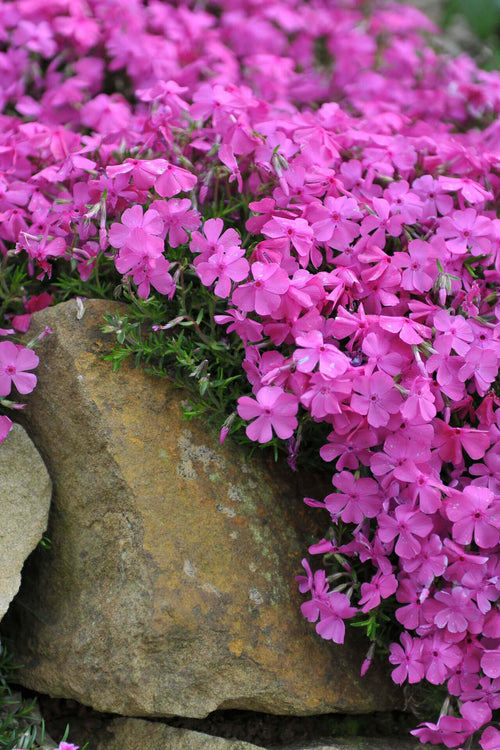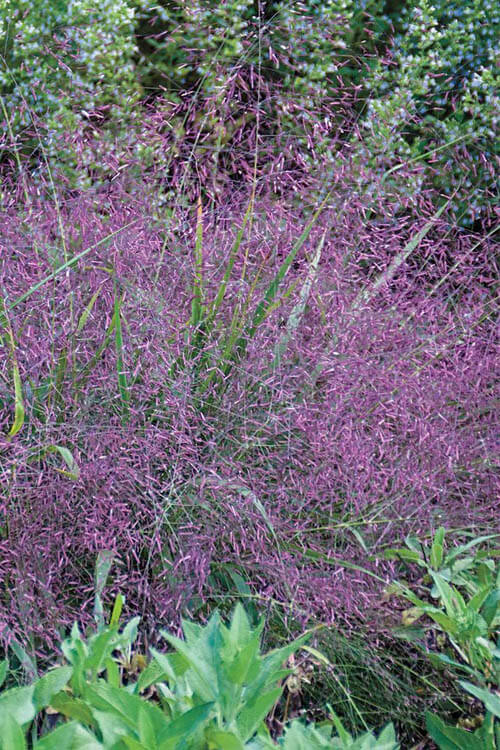American Plants: From Forests to Flowerbeds
Indigenous plants have always played a critical part in preserving the ecological harmony of their respective regions and have been an integral part of the American landscape for centuries. In this article, we will explore five native plants that add beauty to American gardens and have unique cultural and ecological significance. These plants include the vibrant Creeping Phlox, the delicate Partridgeberry Plant, the enchanting Fan Clubmoss, the lovely Periwinkle, and the striking Chocolate Chip Ajuga. We will also discuss the European Ginger, which, while not native to America, can still be a valuable addition to your garden. Each plant has its distinct charm, beauty, and usefulness, making them an excellent choice for any garden enthusiast looking to enhance their space's beauty and ecological value.
Creeping Phlox (Phlox subulata):
Creeping Phlox is a stunning and magnificent low-growing perennial plant found in the eastern and central regions of the United States. During spring, this lovely plant produces cascading blooms that blanket the ground in a breathtaking display of vibrant colors ranging from pink, purple, blue, and white. This exquisite plant is a sight to behold and will leave anyone in awe.
Not only is Creeping Phlox beautiful, but it is also an essential plant in the garden. Its flowers lure pollinators like bees and butterflies, which is necessary for other garden plants. Additionally, its thick foliage provides excellent ground cover, reducing soil erosion and helping to maintain soil moisture. Whether planted in rock gardens, borders, or slopes, Creeping Phlox will thrive and create a beautiful exhibition that will engrave anyone who sees it.
Overall, Creeping Phlox is a magnificent plant that can be grown in various garden settings, creating an eye-catching show that will add beauty and interest to any landscape. It is a true gem of the spring season, and its vibrant colors and pollinator-attracting flowers make it a must-have for any garden enthusiast.
Celebrating Native American Plants: A Garden's Natural Beauty
Partridgeberry Plant (Mitchella repens):
Nestled in the lush forests of eastern North America, the Partridgeberry Plant is a charming evergreen groundcover that will delight any nature lover. Its small, glossy, oval leaves are a deep shade of green, providing a striking contrast to the plant's delicate, trumpet-shaped white flowers that bloom in the spring and early summer.
As the flowers fade, they give way to plump, juicy berries glisten like rubies in the dappled sunlight. The berries are a brilliant shade of red, adding to the plant's allure and making it a favorite of partridges, who feast on them enthusiastically.
But the Partridgeberry Plant isn't just a pretty face. It has a long history of traditional use, with indigenous peoples of North America utilizing it for its medicinal properties. The berries were consumed for their reputed health benefits, and the plant was often brewed into teas or used topically for various ailments. Its healing properties have been well-known for centuries, making it a treasured plant in the natural world.
Fan Clubmoss (Lycopodium digitatum):
Fan Clubmoss, also known by its other names - Ground Cedar or Running Pine, is a fascinating and eye-catching native perennial plant found in the northeastern and Great Lakes regions of the United States. This unique plant has a striking appearance, with feathery branches that extend outwards in all directions and small, scale-like leaves that add to its overall beauty.
This charming plant looks like a miniature version of an evergreen tree, and it can grow up to 8 inches tall. Its leaves are rich green, giving it a vibrant and lively look. It adds a touch of prehistoric charm to any landscape.
In addition to its aesthetic value, Fan Clubmoss has a rich historical significance. Native American tribes used it for various purposes, such as traditional medicine and even as a decorative ceremony element. These tribes knew the value of this plant and used it widely in their cultures. Today, we can appreciate Fan Clubmoss not only for its beauty but also for its cultural significance.
Periwinkle (Vinca minor):
Periwinkle, also known as Myrtle, is a beautiful and versatile evergreen groundcover that adds a touch of enchantment to any garden. Its glossy, dark green leaves and charming blue or purple flowers make it a stunning choice for gardeners looking to create a vibrant, low-maintenance landscape. With its origins in Europe, this plant has become naturalized in many parts of the United States and is admired for its adaptability and beauty.
But Periwinkle is more than just a pretty plant. Its spreading nature makes it perfect for erosion control on slopes, where it helps stabilize the soil and prevent damage caused by heavy rainfall or strong winds. Its power to make a dense, green carpet that covers the ground and suppresses weeds makes it a perfect option for gardeners desiring a low-maintenance solution. Furthermore, Periwinkle is a hardy plant that can thrive in various conditions, including shade, drought, and pollution. This makes it a resilient and dependable addition to any garden.
Chocolate Chip Ajuga (Ajuga reptans 'Chocolate Chip'):
Chocolate Chip Ajuga is a captivating and highly sought-after plant variety known for its stunning foliage. This Ajuga reptans cultivar boasts small, delicate leaves with a rich chocolate hue, complemented by subtle hints of green and burgundy. The contrasting colors of the leaves create a fascinating visual charm that immediately catches the eye.
Gardeners treasure Chocolate Chip Ajuga for its versatility and unique appearance. As an excellent ground cover, it thrives in shady areas where it can form a dense, low-growing carpet of foliage. The striking chocolate-colored leaves contrast with other plants, making it a favored option for creating eye-catching garden designs.
This exceptional Ajuga variety is a prime example of how native plants can be selectively bred to enhance specific characteristics. Gardeners who appreciate the beauty of nature and want to add a touch of elegance to their gardens will undoubtedly find Chocolate Chip Ajuga a valuable addition.
Cultivating American Plants: Horticultural Treasures in Your Garden
European Ginger (Asarum europaeum):
The exquisite European Ginger, even though it originates from Europe. It is not native to the United States but has become a beloved choice for many American gardeners who appreciate its outstanding beauty and versatility. This low-growing perennial groundcover has stunning glossy, heart-shaped leaves and striking burgundy-colored flowers.
European Ginger thrives in areas with limited light, where it can grow into a lush and dense, visually appealing and practical, carpet-like appearance. Its low maintenance requirements and hardiness make it a perfect substitute for traditional lawn grass in low-light areas. With its unique and attractive features, European Ginger is an ideal addition to any shade garden, and it will undoubtedly enhance the beauty and charm of any landscape it inhabits.
In conclusion, these native plants, including Creeping Phlox, Partridgeberry Plant, Fan Clubmoss, Periwinkle, and Chocolate Chip Ajuga, along with the bonus mention of European Ginger, offer a diverse range of beauty, ecological benefits and cultural significance to American gardens. By incorporating these plants into our landscapes, we not only enhance the aesthetic appeal of our gardens but also contribute to the preservation of native plant species and promote sustainable gardening practices. Whether for their vibrant blooms, ground-covering capabilities, or historical value, these plants exemplify the richness and diversity of America's horticultural heritage.



















































